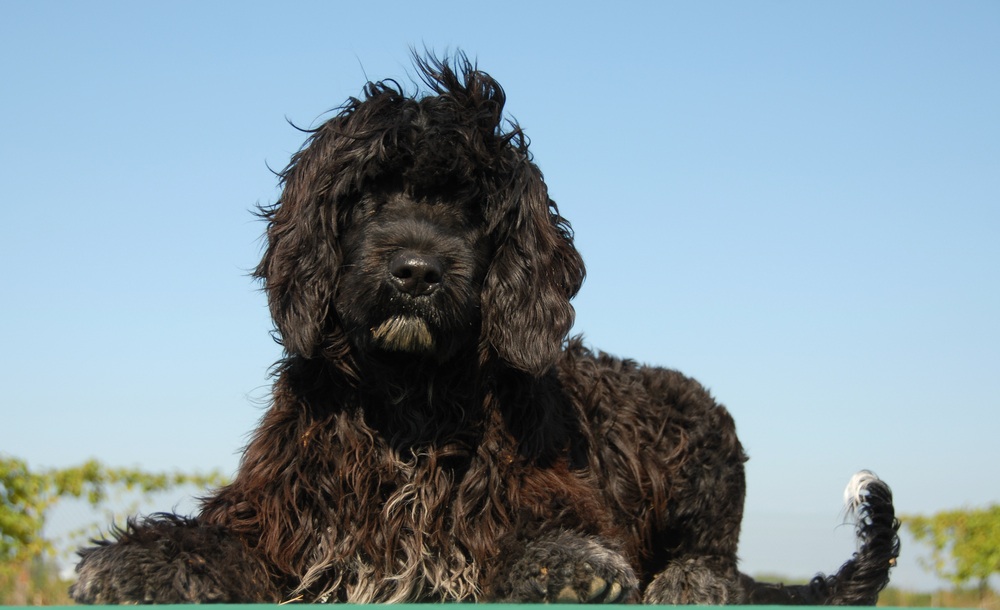Portuguese Water Dog
This particular breed has sprung to prominence, thanks to Bo, a black and white Portuguese water dog, who has joined the Obama family in the White House, fulfilling one of the promises that the President made on the campaign trail. The young dog, named after the famous blues player Bo Diddley, is a gift from the late Senator Edward Kennedy who was a devotee of the breed. This marks a remarkable comeback for the Portuguese water dog, known in its homeland as the Cão de Água. During the 1960s, it was considered to be the most endangered breed in the world, with less than 50 individuals still known to exist.
It is thought to share its ancestry with ancient European breeds such as the barbet, which were bred to retrieve game from water, thereby making it a distant cousin of the poodle. As with poodles, the Portuguese water dog’s coat is considered hypoallergenic, and is not shed like those of most dogs. The breed is therefore recommended where there are family members susceptible to allergies, as is the case with the Obamas’ elder daughter Malia.
Coat styling
Another characteristic that the Portugese water dog shares with the poodle is the way that its coat is trimmed. Two traditional styles are recognised. There is the so-called lamb trim, where the coat is of an even length over the entire body, or the lion trim, when the rear end of the body is clipped, aside from the tip of the tail. Regular trimming every couple of months or so is necessary to prevent its coat from becoming too long.
At work
When at sea, Portuguese water dogs would stand at the prow of the boat, looking ahead for shoals of fish. When these were sighted, the dogs would leap overboard into the sea, and drive the schools of fish into the fishermen’s nets. They were also used to carry messages between boats, swimming from one to another, and in foggy weather, they were trained to bark, acting as fog horns, indicating the presence of their boat to others in the flotilla. Their voices are very distinctive.
As technology started to take over in the 20th century, so the numbers of Portuguese water dogs then began to decline dramatically. Thanks to the efforts of European breeders who appreciated its wonderfully friendly personality however, so the Portuguese water dog was saved from extinction. The breed started to become known in the US during the 1970s, being a favourite of actor Raymond Burr, but remained unrecognised up until 1984. Now however, its sudden rise to fame on the world stage means that its future should be secure.
Key Facts
Height: 43-58.5cm (17-23in), with male dogs being larger.
Weight: 16-27kg (35-60lb).
Colouration: there are five different possibilities - brown; black; white; black with white markings, and brown with white markings. White is the rarest variety. Brown dogs may turn greyish with age - confusingly, this change is called blueing!
Coat: two variants exist - either compact and curly (the Cão de Água de Pêlo Encaracolado), or long and wavy (Cão de Água de Pêlo Ondulado).
Temperament: friendly but active by nature, this is a breed requiring plenty of exercise.